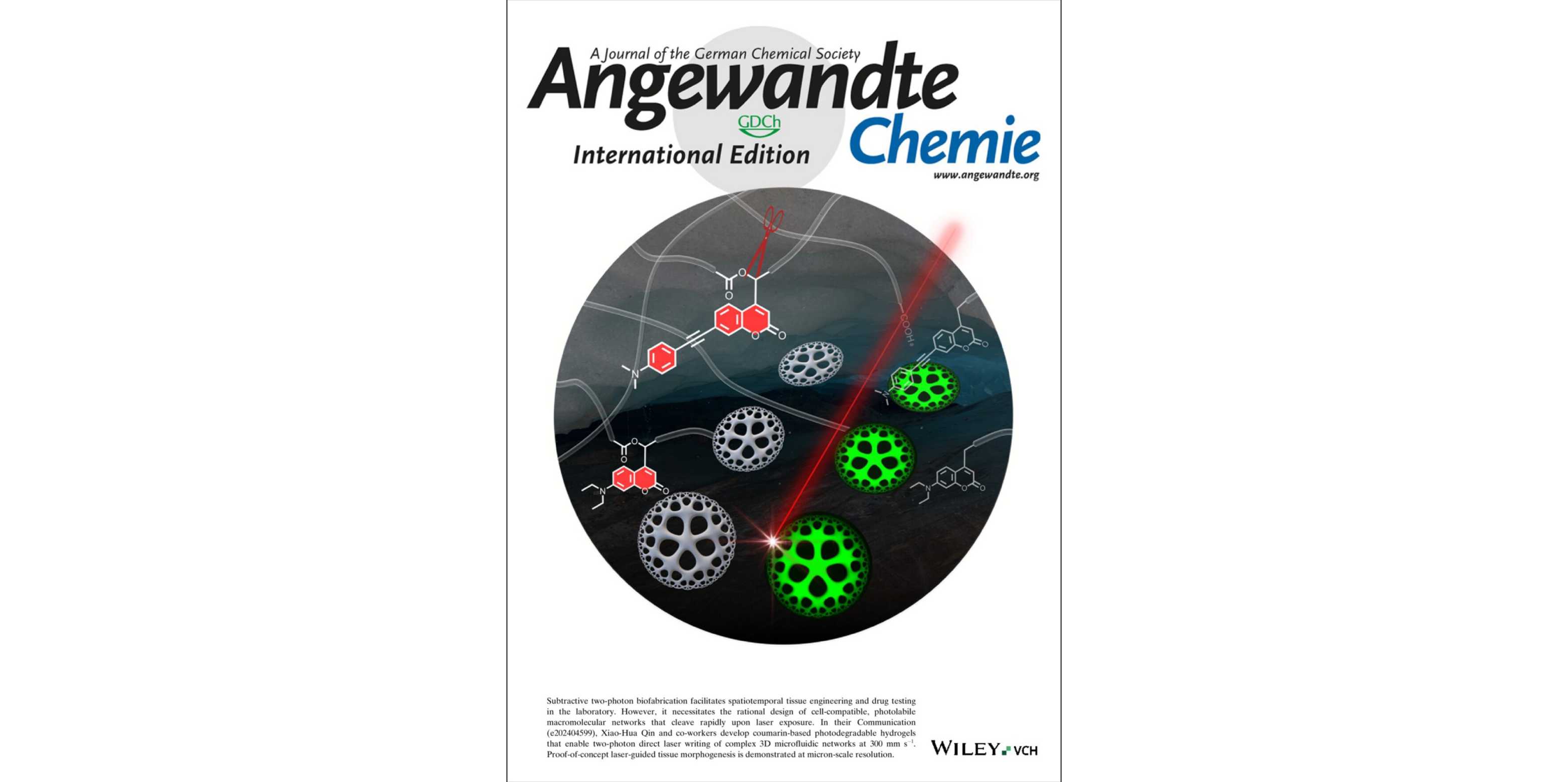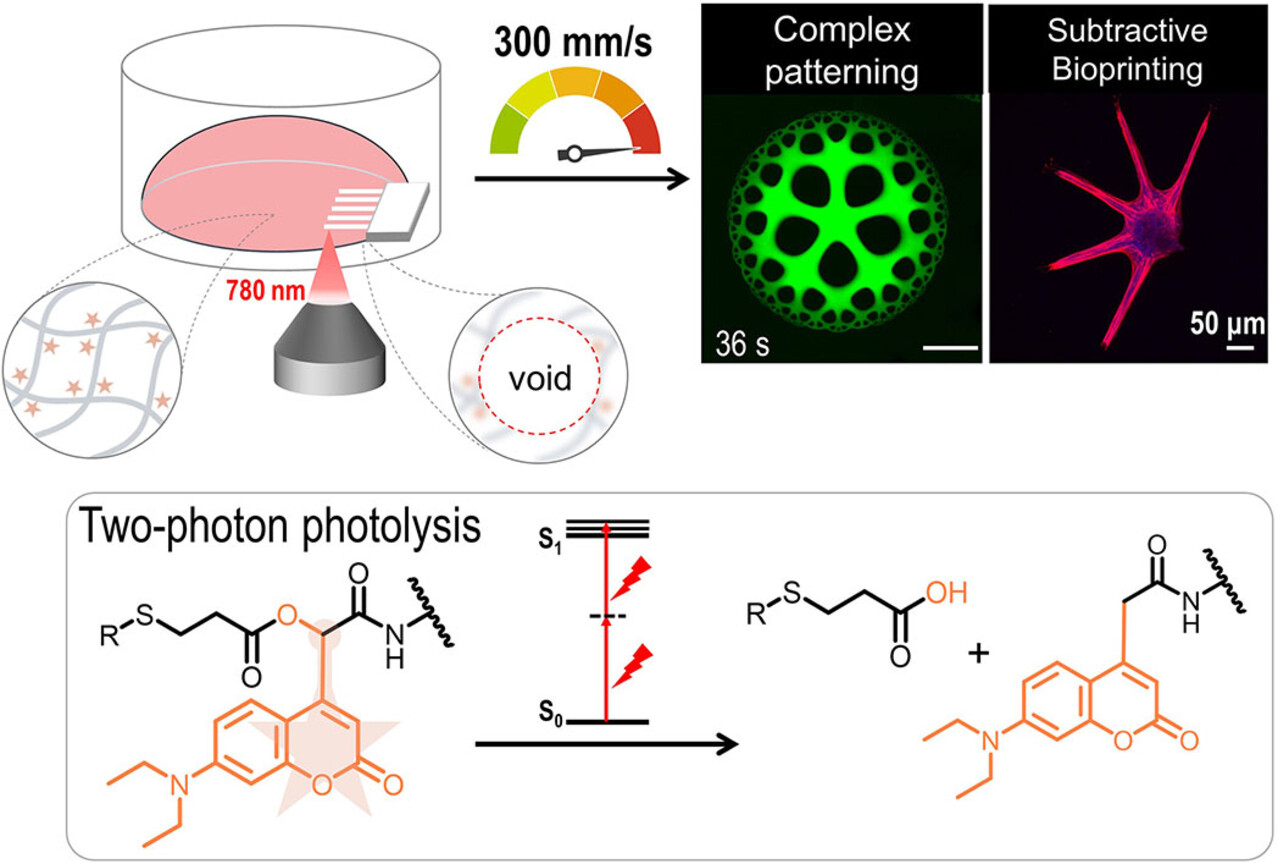Congrats to Wanwan for her latest publication in Angewandte Chemie!
Our coumarin-based photodegradable hydrogels for efficient two-photon direct laser writing were featured with a cover

Spatiotemporally controlled two-photon photodegradation of hydrogels has gained increasing attention for high-precision subtractive tissue engineering. However, conventional photolabile hydrogels often have poor efficiency upon two-photon excitation in the near-infrared (NIR) region and thus require high laser dosage that may compromise cell activity. As a result, high-speed two-photon hydrogel erosion in the presence of cells remains challenging. Here we introduce the design and synthesis of efficient coumarin-based photodegradable hydrogels to overcome these limitations. A set of photolabile coumarin-functionalized polyethylene glycol linkers are synthesized through a Passerini multicomponent reaction. After mixing these linkers with thiolated hyaluronic acid, semi-synthetic photodegradable hydrogels are formed in situ via Michael addition crosslinking. The efficiency of photodegradation in these hydrogels is significantly higher than that in nitrobenzyl counterparts upon two-photon irradiation at 780 nm. A complex microfluidic network mimicking the bone microarchitecture is successfully fabricated in preformed coumarin hydrogels at high speeds of up to 300 mm s−1 and low laser dosage down to 10 mW. Further, we demonstrate fast two-photon printing of hollow microchannels inside a hydrogel to spatiotemporally direct cell migration in 3D. Collectively, these hydrogels may open new avenues for fast laser-guided tissue fabrication at high spatial resolution.
